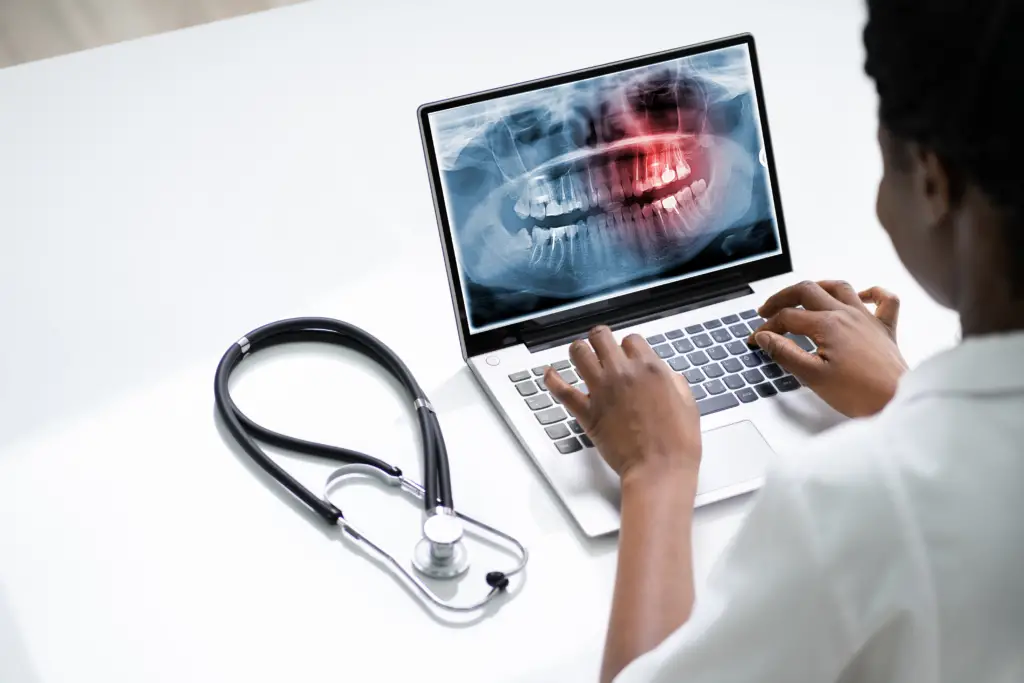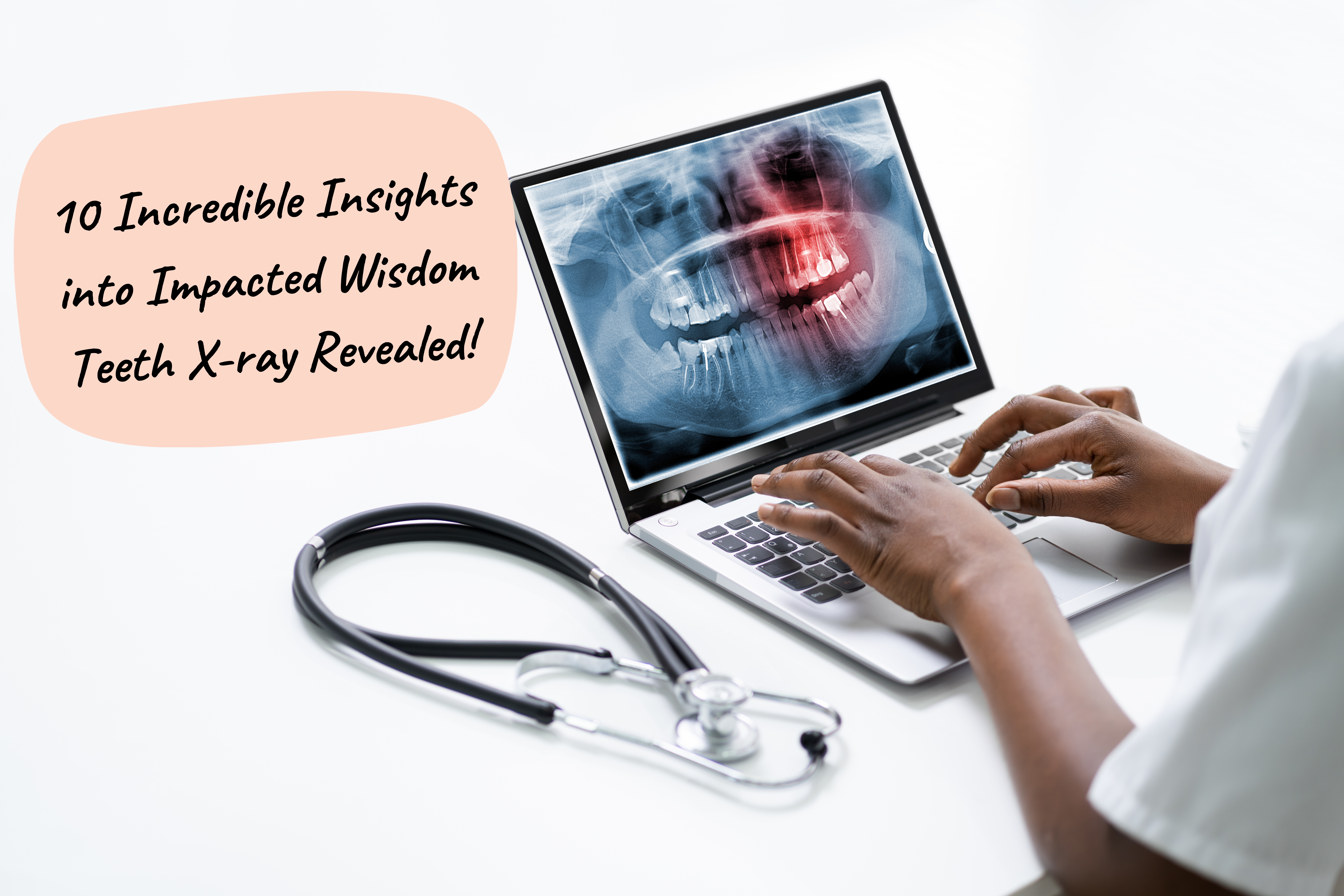`When it comes to dental health, getting an “Impacted Wisdom Teeth X-ray” is a crucial step to ensuring that the back-most molars are growing correctly. This detailed guide dives deep into everything you need to know about this essential diagnostic tool.
Introduction to Impacted Wisdom Teeth
Wisdom teeth, also known as third molars, are the last to emerge, typically in one’s late teens or early twenties. Sometimes, due to lack of space or misalignment, these teeth can become impacted, leading to potential dental complications.
History of Dental X-rays
The discovery of X-rays in the late 19th century revolutionized the field of medicine. Soon after, dental professionals adopted this groundbreaking technology, providing a non-invasive way to view the hidden areas of the mouth.
The Evolution of X-ray Techniques
From blurry images in the early days to the crisp, digital images we have today, X-ray techniques have witnessed significant advancements. Modern X-ray machines are more efficient, producing clearer images while minimizing radiation exposure.
Impacted Wisdom Teeth: What are they?
Impacted wisdom teeth occur when there isn’t enough space for them to emerge or grow in the proper direction. They might remain trapped within the jawbone or gums, which can lead to infections or other complications.
- Causes of Impacted Wisdom Teeth The primary reason is the lack of space in the mouth. Evolutionary changes have led to humans having smaller jaws, often not large enough to accommodate the third set of molars.
- Symptoms and Signs Pain, swelling around the jaw, bad breath, and difficulty opening the mouth can all be indicative of impacted wisdom teeth.
The Importance of X-rays in Diagnosis
X-rays are vital in diagnosing dental problems that are not visible to the naked eye. They provide a detailed view of the teeth, bones, and surrounding tissues.
- Benefits of X-rays They can detect hidden dental issues, help in planning treatments, and monitor specific conditions, making them indispensable in modern dentistry.
- Risks and Precautions While X-rays are generally safe, excessive exposure to radiation can be harmful. It’s essential to inform the dentist about previous X-rays or if you’re pregnant.
Impacted Wisdom Teeth X-ray: The Procedure
Getting an X-ray for impacted wisdom teeth is a straightforward process.
- Preparing for the X-ray You might be asked to remove any metal objects like jewelry. It’s also a good idea to wear comfortable clothing.
- What to Expect During the X-ray The dental technician will place a protective apron on you and position your head to capture the best image. The process is quick and painless.
- Post X-ray Care There’s no special care required post X-ray. You can return to your daily activities immediately.

How to Read an Impacted Wisdom Teeth X-ray
Understanding your X-ray can give you a clearer picture of your dental health.
- Identifying Impacted Teeth Impacted teeth may appear angled, and there may be signs of crowding with the surrounding teeth.
- Determining the Severity of Impaction The angle and position of the impacted tooth can help determine whether a simple extraction or a more complex surgical procedure is required.
Treatment Options for Impacted Wisdom Teeth
After the X-ray, your dentist will recommend the best course of action.
- Surgery and Extraction This is the most common treatment for impacted wisdom teeth. It involves removing the tooth to prevent potential complications.
- Monitoring and Regular Check-ups If the impacted tooth isn’t causing any issues, the dentist might advise regular monitoring instead of immediate extraction.
- Alternative Treatments In some cases, treatments like braces or other orthodontic devices might be used to create space for the impacted tooth.
Real-life Experiences with Impacted Wisdom Teeth X-rays
Hearing about real-life experiences can provide valuable insights.
- Personal Story 1 John, a 25-year-old, experienced severe jaw pain. An X-ray revealed an impacted wisdom tooth pressing against a nerve. After extraction, the pain disappeared, highlighting the importance of timely diagnosis.
- Personal Story 2 Sarah’s X-ray showed a mildly impacted wisdom tooth. Instead of extraction, her dentist suggested monitoring, saving her from unnecessary surgery.
Impacted Wisdom Teeth X-ray: Costs and Insurance Coverage
The cost of the X-ray can vary based on location and insurance coverage. It’s essential to check with your insurance provider about the coverage details.
The Future of Dental X-ray Technology
With advancements in AI and machine learning, the future of dental X-ray technology looks promising. We might soon have machines that can detect issues even before they become problematic.
Impacted Wisdom Teeth X-ray vs Other Dental X-rays
While the focus of this article is on impacted wisdom teeth, it’s worth noting that there are various types of dental X-rays, each serving a specific purpose.
FAQs
- Why are X-rays essential for detecting impacted wisdom teeth?
- X-rays provide a detailed internal view, allowing dentists to detect issues that might not be visible during a regular check-up.
- Are X-rays safe during pregnancy?
- While X-rays are generally safe, it’s crucial to inform your dentist if you’re pregnant. They might take extra precautions or postpone the X-ray.
- How often should I get dental X-rays?
- The frequency depends on individual dental health. Some might need it annually, while others might require it less often.
- What’s the recovery time after wisdom teeth extraction?
- Most people recover within a few days to a week. It’s essential to follow the dentist’s post-operative care instructions.
- Can I eat immediately after getting an X-ray?
- Yes, there are no dietary restrictions post X-ray.
- What’s the difference between a regular X-ray and a panoramic X-ray?
- A regular X-ray focuses on a specific area, while a panoramic X-ray provides a comprehensive view of the entire mouth.
Conclusion
An “Impacted Wisdom Teeth X-ray” is an invaluable diagnostic tool in modern dentistry. Whether you’re experiencing pain or just going for a routine check-up, understanding the process can make the experience less daunting. Remember, timely detection can save you from potential complications, making regular dental visits crucial for optimal oral health.

